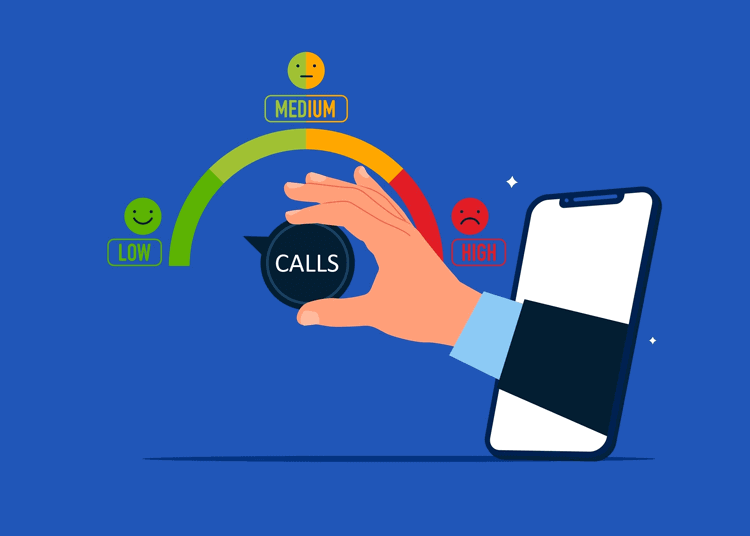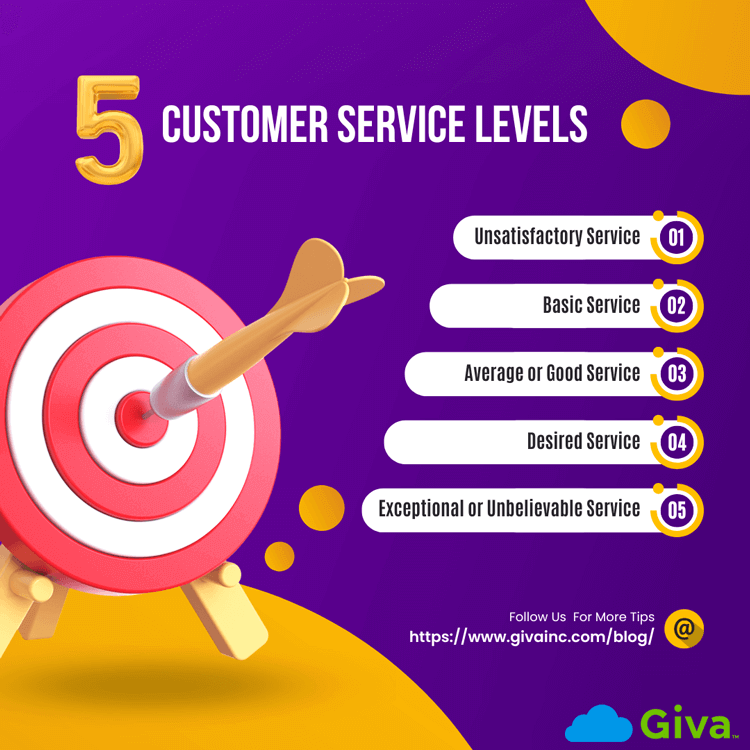White Glove Customer Service: How to Implement, Overcome Obstacles and Measure for Success
Delivering outstanding customer service is essential for any business aiming to stand out in a competitive marketplace. White glove customer service is all about providing the highest level of service. That means focusing on attention to detail, personalized experiences, and exceeding customer expectations from the moment they think of you to post-purchase/service.

In this guide we will analyze the essential components, proven strategies, real-life examples, and training techniques necessary to implement white glove customer service at your business.
Understanding White Glove Customer Service
White glove customer service represents a commitment to exceeding customer expectations. The meticulous approach involves not only delivering good service but going far above and beyond the norm.
For example, when customers bring their car to your dealership for service, you provide them with a coffee and snack bar. A week later, your staff personally follows up by phone or email to check on the performance of the vehicle.
You do not need statistics to know that if you treat a customer well, they will not only consider you again in the future but also recommend you to others.
Why It Matters: The Benefits of Going the Extra Mile
The benefits of white glove customer service extend beyond immediate customer satisfaction — it can have long-lasting effects. Here are a few key advantages:
- Enhanced Customer Loyalty: The most obvious benefit — when customers feel valued and appreciated, they are more likely to return and stay loyal to your brand.
- Positive Word-of-Mouth: Satisfied customers are more likely to recommend your business to others. Compared to standard advertising, this organic marketing may be more successful.
- Competitive Advantage: Offering a superior customer experience sets your business apart from competitors. In a market where many products and services are similar, exceptional customer service can be the deciding factor for consumers.
- Cost Savings: Investing in customer experience can also reduce costs by minimizing customer complaints and streamlining service processes.
Implementing White Glove Service in Your Business
Implementing white glove customer service in your business requires a strategic approach that encompasses various aspects of operations, employee training, and customer interactions. Here's how you can start:
-
Assess Your Current Service Standards
Begin by evaluating your existing customer service practices. Identify areas where your service excels and areas that need improvement. This assessment can be based on customer feedback, service performance metrics, and employee insights.
-
Develop a Customer-Centric Culture
Creating a company culture that prioritizes the customer experience is critical. This involves instilling the values of attentiveness, personalization, and excellence in all employees. Leadership should model these behaviors and recognize employees who go above and beyond in their service.
-
Train Your Team
Training is a fundamental component of implementing white glove customer service. Ensure that your employees are equipped with the skills and knowledge necessary to deliver exceptional service. Training programs should cover:
- Customer Interaction Skills: Effective communication, empathy, and active listening
- Problem-Solving Techniques: Strategies for proactively addressing and resolving issues
- Product Knowledge: Deep understanding of the products and services offered
- Attention to Detail: Importance of small touches that enhance the customer experience
-
Personalize Customer Interactions
Personalization is at the heart of white glove customer service. Use customer data to tailor interactions and services to individual preferences and histories. This can include personalized recommendations, remembering past interactions, and offering tailored solutions.
-
Implement Proactive Service Measures
Anticipate customer needs and address potential issues before they arise. This can involve regular follow-ups, maintenance reminders, and pre-emptive problem solving. For example, if you know a product has a common issue after a certain period, reach out to customers before they experience the problem.
-
Monitor and Measure Performance
Regularly monitor the performance of your customer service initiatives. Use metrics such as customer satisfaction scores, Net Promoter Scores (NPS), and customer retention rates to gauge effectiveness. Gather and act on customer feedback to continuously improve your service.
-
Invest in Technology
Leverage technology to enhance your service delivery. Customer Relationship Management (CRM) systems can help manage customer data and interactions. Moreover, automation tools can streamline routine tasks and free up staff to focus on high-touch service.
A Success Story: Real-World Example of White Glove Service in Action
One of the top white glove customer service examples comes from the Ritz-Carlton. While staying at one of their properties comes with a hefty price tag, it also comes with impeccable service. Here are a few highlights of what they call "The Gold Standard":
Motto
The guiding principle at The Ritz-Carlton is "We are ladies and gentlemen serving ladies and gentlemen." This instills a culture of respect and dignity for both employees and guests, setting high standards from the start.
Credo
The Ritz-Carlton commits to offering exceptional personal service and facilities, helping guests enjoy a welcoming, relaxed, yet sophisticated atmosphere. Employees are trained to anticipate and meet guests' expressed and unexpressed needs. For example, if a guest prefers a cooler room as noted in a survey after a previous stay, hotel staff can ensure the room is set to the ideal temperature ahead of time.
Twelve Service Values
Employees are driven by Twelve Service Values that emphasize innovation, problem resolution, and maintaining a professional demeanor.
Three Steps of Service
- Warm and sincere greetings
- Using the guest's name and anticipating their needs
- A fond farewell using the guest's name
Training
Employees undergo at least 250 hours of annual training through various formats. These include one-on-one coaching, online modules, classroom sessions, and weeklong seminars, catering to different learning styles.
Employee Engagement
On the 21st day of employment, staff members are certified in their roles and provided with a platform to discuss their experiences — good or bad.
Empowerment
Employees have the authority to spend up to $2,000 per guest per day to resolve any issues without needing supervisor approval. This enables swift problem resolution and enhancing guest satisfaction. This is applicable to all employees from front desk staff to housekeepers.
Overcoming Obstacles: 6 Common Challenges in Delivering White Glove Service
Delivering white glove customer service is a team effort. Maintaining such high standards can also bring out some unique challenges that businesses must learn to navigate. Here are some common obstacles and strategies to overcome them:
-
High Operational Costs
Providing personalized and exceptional service can be costly. This includes expenses related to training, staffing, and implementing advanced technologies.
Solution
- Efficient Resource Allocation: Use data analytics to identify key areas where high-impact service improvements can be made without excessive costs. For example, looking back at the Ritz-Carlton's "Three Steps of Service" shows that simple actions by your staff, which do not cost any money, can contribute to guest satisfaction.
- Technology Integration: Invest in CRM systems and automation tools wherever possible to streamline operations and reduce manual labor while maintaining high service levels.
-
Consistency Across All Touchpoints
Ensuring consistent service quality across various customer touchpoints can be challenging, especially for businesses with multiple locations or channels.
Solution
- Standardized Training Programs: Implement comprehensive training programs that help all employees understand and adhere to the same service standards.
- Regular Audits, Feedback and Awards: Conduct regular audits and gather customer feedback to monitor service consistency and address any discrepancies promptly. Provide awards or other incentives to staff that regularly uphold your corporate standards for customer service.
-
Employee Engagement and Retention
Maintaining high levels of employee engagement and retaining skilled staff is crucial for delivering consistent white glove customer service. High turnover can disrupt service quality and increase training costs.
Solution
- Empowerment: Empower employees by giving them the authority to make decisions that enhance customer satisfaction.
- Career Development Opportunities: Provide continuous learning and career advancement opportunities to keep employees motivated and engaged.
-
Meeting Diverse Customer Expectations
Customers have varying expectations and preferences, making it difficult to deliver a uniformly satisfying experience.
Solution
- Personalization: Use customer data to personalize interactions and tailor services to meet individual preferences and expectations. For example, a hotel chain could send pre-stay messages to guests asking about room temperature preference, bed-type options, welcome drinks, etc.
-
Handling Customer Complaints Effectively
Even with the best intentions, service failures can occur. How these are handled can significantly impact customer perceptions.
Solution
- Quick Resolution: Empower employees to resolve issues promptly and effectively without needing higher-level approvals.
- Follow-Up: Thoroughly follow-up with customers after resolving complaints to confirm their satisfaction and rebuild trust.
-
Adapting to Technological Advances
Keeping up with rapid technological changes can be challenging but is necessary for maintaining competitive service standards.
Solution
- Continuous Learning: Stay updated with the latest technological advancements and incorporate relevant tools and systems into your service framework. For example, larger hotels could look at implementing key-card machines, so guests can bypass longer front desk lines and quickly gather their room keys.
7 Key Metrics to Measure White Glove Service Effectiveness
To determine the effectiveness of your white glove customer service plan, it is crucial to implement some specific key metrics. You want to ensure that the service is being delivered and received as you had intended.
-
Customer Satisfaction (CSAT) Scores
Customer satisfaction scores are a direct indicator of how pleased customers are with the service they received. These scores can be gathered through post-interaction surveys, asking customers to rate their experience on a scale. High CSAT scores typically reflect successful white glove customer service.
-
Net Promoter Score (NPS)
Net promoter score measures customer loyalty by asking how likely they are to recommend the service to others. Customers rate their likelihood on a scale of 0-10, and the scores are categorized into promoters, passives, and detractors. A high NPS indicates that the white glove customer service is creating advocates who are willing to promote your business.
-
First Contact Resolution (FCR)
First Contact Resolution measures the percentage of customer issues resolved during the first interaction. High FCR rates are indicative of efficient and effective service, a hallmark of white glove treatment. This metric reduces the need for follow-up contacts and enhances customer satisfaction from the get-go.
-
Customer Effort Score (CES)
Customer effort score gauges how easy it was for customers to get their issues resolved. A low effort score means customers found the process straightforward and hassle-free.
-
Average Handling Time (AHT)
While it might seem counterintuitive, monitoring the average handling time is important, even for white glove customer service. The goal is not to minimize the time but to ensure that each interaction is thorough and leaves the customer satisfied. A balance between efficiency and quality of service is essential.
-
Customer Retention Rate
Customer retention rate measures the percentage of customers who continue to use the service over a period. High retention rates suggest that customers value the exceptional service and are less likely to switch to competitors.
-
Employee Happiness and Engagement
The effectiveness of white glove customer service training can also be reflected in employee satisfaction and engagement. Happy and engaged employees are more likely to provide outstanding service. Regular surveys and feedback sessions can help gauge what they like and do not like about various areas of the business and its operations.
Read more: 5-Star Customer Service: Skills for Promoting Excellence in Every Interaction Plus Examples
The Bottom Line: White-Glove Care to Elevate Your Customer Experience
Implementing white glove customer service is a commitment to exceeding customer expectations and creating memorable, personalized experiences.
By addressing key elements such as personalized attention, proactive problem solving, and continuous improvement, businesses can overcome common challenges and deliver exceptional service.
The benefits of adopting this approach include enhanced customer loyalty, positive word-of-mouth, and a competitive advantage.
Help Create a White Glove Customer Service Experience with Giva Software
Giva's Customer Service Software in the Cloud can help your customer support agents keep service above and beyond the norm.
Giva's features include:
- Service Level Agreements to target respond/resolve times, measure goals and deliver consistent service
- Custom ticket forms capture additional necessary fields for a more personalized customer journey
- Reusable knowledge for faster resolutions
- Routing and action rules to convert emails into tickets including attachments and embedded images so the proper agents get the issues more quickly
Let Giva help keep your team streamlined and responsive. Book a free Giva demo to see our solutions in action, or start a free, 30-day trial today!





